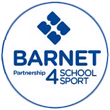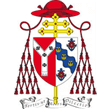Design and Technology
Design DT
Intent
At St Theresa’s we seek to provide a range of exciting DT opportunities for children. We aim to provide a motivating and meaningful context for children’s learning that will spark their curiosity. We intend for all units to include the following objectives:
- Investigative activities – where children critically evaluate existing products
to inform their own design considerations. - Focused practical tasks – where children are given the opportunity to learn
and practise new skills and techniques which they can utilise in making
products. - Design and make’ assignments – where the children are given the
opportunity to be creative, using what they have learned through previous
activities. - Evaluating an end product – where children decide if it is fit for its purpose
and what changes could be made to improve their design.
Implementation
At the heart of our vision and mission statement is the idea that we are all made in the image and likeness of God; that every individual has a God given gift and that we are to use this gift – recognise it and use it. Therefore, our whole curriculum is shaped by our school vision which aims to enable all children, regardless of background, ability, additional needs, to flourish to become the very best version of themselves they can possibly be. At St Theresa’s we want our children to discover and develop their gifts (whatever they may be) and fulfil their potential to the best of their ability. We teach the National Curriculum, supported by a clear skills and knowledge progression. This ensures that skills and knowledge are built on year by year and
sequenced appropriately to maximise learning for all children. All teaching of DT should follow the design, make and evaluate cycle. Each stage
should be rooted in technical knowledge. The design process should be rooted in real life, relevant contexts to give meaning to learning. While making, children should be given choice and a range of tools to choose freely from. To evaluate, children should be able to evaluate their own products against a design criteria. Each of these steps should be rooted in technical knowledge and vocabulary. DT should be taught to a high standard, where each of the stages should be given equal weight. The key skills we teach the children are:
- sewing and textiles
- cooking and nutrition
- electrical and mechanical components
- using materials
To help implement the requirements for DT in an imaginative way, teachers use the St Theresa’s scheme of work for primary design and technology. Each unit embeds the essentials of good practice in DT. Specific skills are explained clearly, broken down into each step, supported by simple, visual appendices. This ensures that children will receive a rich and informative curriculum. We have used the D&T Association Projects on a Page and PlanBee to tailor our curriculum to the needs of our learners and our this is based on the six essentials of good practice in D&T. These need to be in place in teachers’ planning to ensure children’s learning is genuinely design and technological in nature.
Impact
Children self-evaluate their end pieces against its strengths and weaknesses, then offer ways to improve their work. During both key stages, children gain skills in collaboration, investigation, construction, evaluation and design. Crucially, children are prepared with skills that are transferable into future work life. In each key stage, children will build upon skills each year through focus on the same themes. By the time children leave St Theresa’s we aim for them to have a passion for D.T.







